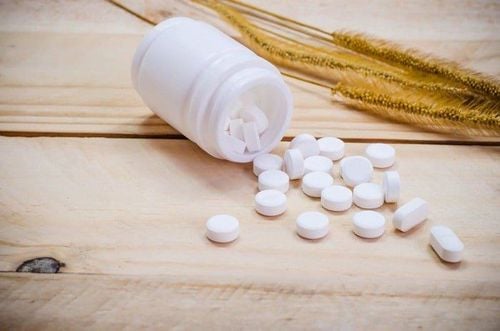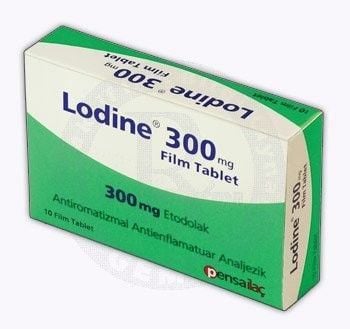This is an automatically translated article.
Thepacodein drug has the main ingredients Paracetamol, Codeine phosphate hemihydrate and other excipients. Thepacodein is used to treat mild to moderate pain. Let's find out more details about how to use Thepacodein safely and effectively through the following article.
1. What is Thepacodein?
Thepacodein belongs to the group of analgesics, antipyretics, non-steroid anti-inflammatory drugs, drugs for the treatment of Gout and osteoarthritis. Thepacodein is prepared in the form of hard capsules packed in boxes of 10 blisters x 10 tablets.
Thepacodein drug has the main ingredients Paracetamol 500mg and Codeine phosphate hemihydrate 15mg, other excipients just enough for 1 capsule.
2. What are the effects of Thepacodein?
Thepacodein is used to relieve mild to moderate pain.
Patients need to comply with the use of Thepacodein in accordance with the indications (uses, functions for whom) written on the instruction sheet for Thepacodein or the doctor's prescription.
3. Dosage - How to take Thepacodein
Thepacodein is prescribed by a doctor's prescription, patients need to strictly adhere to the regulations on the dose prescribed in the instruction sheet. Do not change the dose of Thepacodein on your own without consulting your doctor or pharmacist.
Dosage of Thepacodein refer to the following:
Adults:
Single dose (Approximately) 15 mg - 60 mg Thepacodein. Maximum Thepacodein Dose in 24 Hours Codeine Phosphate 360 mg Paracetamol 300 mg - 1000 mg - 4000 mg Dosage may be repeated every 4 hours.
4. Contraindications to the use of Thepacodein
Thepacodein should not be used in the following cases:
Patients with hypersensitivity or allergy to any ingredient of Thepacodein. Patients with impaired liver or kidney function. The patient is an alcoholic. Patients with glucose-6-phosphate dehydrogenase deficiency. Children under 18 years of age who have had their tonsils removed or curettage V.A.
5. Side effects when using Thepacodein drug treatment
During the use of Thepacodein, patients may experience some unwanted side effects such as:
Common:
Dizziness, dizziness, nausea and vomiting, sedation, shortness of breath. Other:
Allergic reactions, irritability, euphoria, constipation, abdominal pain and itching. At high doses of thepacodeine, codeine has most of the adverse effects of morphine, including respiratory depression. Patients should inform their doctor or pharmacist of any side effects encountered during the use of Thepacodein.
6. Precautions when using Thepacodein
Patients need to carefully refer to the instruction sheet for Thepacodein drug or refer to some of the notes below.
Thepacodein may increase head damage and increase intracranial pressure. Thepacodein side effects may mask the clinical course of patients with head injury. Thepacodein may obscure the diagnosis or clinical course of patients with acute abdominal diseases. Thepacodein should be used with caution in elderly or frail patients, in patients with severe renal or hepatic impairment, hypothyroidism, Addison's disease, urethral obstruction, and prostatic hypertrophy. Thepacodein should not be used concurrently with other narcotic analgesics, tranquilizers, antipsychotics or other central nervous system depressants (including alcohol). When co-administration of Thepacodein with these drugs is mandatory, the dose of one or both drugs should be reduced. Thepacodein should be used with caution in children under 12 years of age. Thepacodein should be used with caution in pregnant women and lactating women. Thepacodein can cause serious skin reactions such as Stevens-Johnson syndrome, Lyell syndrome, toxic skin necrosis syndrome, acute generalized exanthematous pustulosis. The above are the outstanding uses of Thepacodein drug, before using it, patients need to carefully consult and use the drug as indicated to get the best treatment results.













